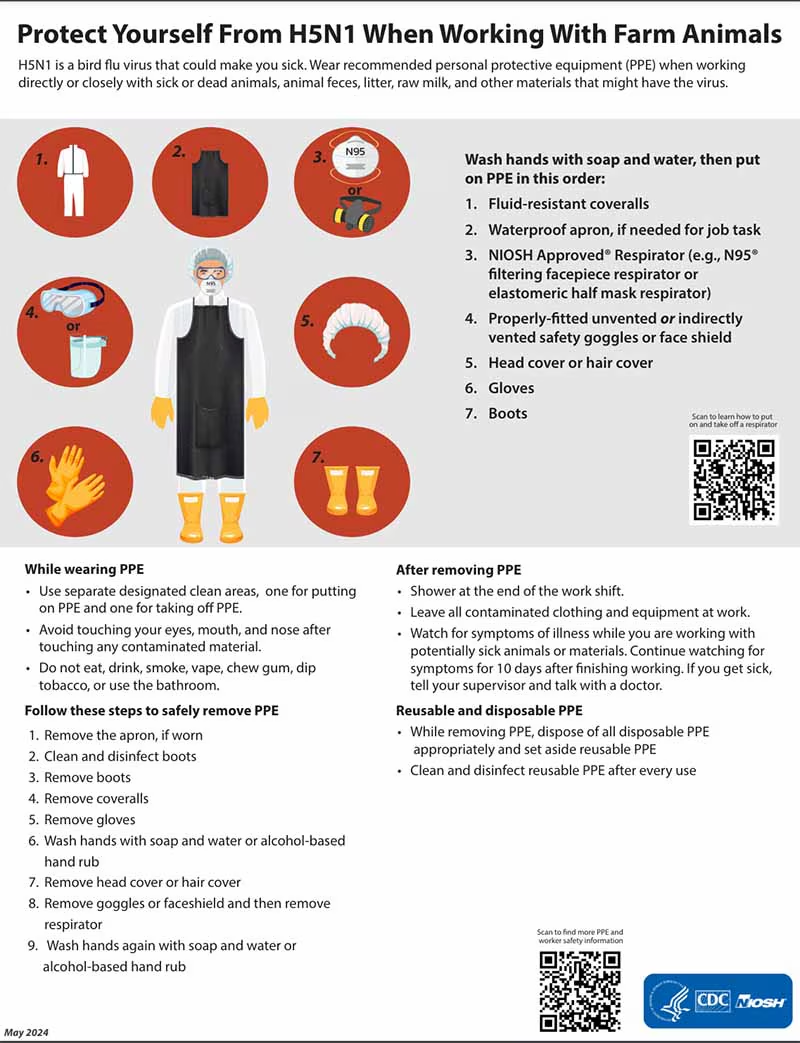Introduction
In recent developments, a second human case of highly pathogenic avian influenza (HPAI) A(H5) virus infection has been reported in Michigan, linked to an ongoing outbreak of A(H5N1) in dairy cows. This follows a similar case in Texas, where both individuals were dairy farm workers exposed to H5N1-infected cattle. These incidents highlight the importance of stringent monitoring and preventive measures for those working closely with potentially infected animals.
Case Background
The Michigan case involved a dairy worker under surveillance due to their exposure to H5N1-infected cattle. The worker developed eye symptoms, prompting the collection of both nasal and eye swabs. While the nasal swab tested negative, the eye swab confirmed the presence of the influenza A(H5) virus. This mirrors the earlier Texas case, where the patient also exhibited only eye symptoms. These instances of conjunctivitis (eye infections) align with known presentations of avian influenza in humans, though they are relatively rare.
For more details, see this CDC PDF on Avian Influenza:
CDC's Response and Recommendations
Despite these cases, the CDC assesses the overall risk to the U.S. general public as low. The CDC has intensified surveillance and provided updated recommendations for protecting workers in affected industries. Key actions include:
- Enhanced Monitoring and Testing: States are implementing CDC-recommended strategies to monitor and test exposed individuals promptly.
- Worker Protection Updates: Interim guidelines for worker protection, including the use of personal protective equipment (PPE), have been revised to cover dairy farm workers and slaughterhouse employees.
- Public Health Alerts: Health Alert Notices (HAN) have been issued, emphasizing the identification of human infections and outlining investigation and response protocols.
- Collaboration and Readiness: The CDC has increased engagement with state and local health departments, encouraging a shift from preparedness to readiness, and ensuring the availability of PPE for farmworkers.
Given the high levels of A(H5N1) virus detected in unpasteurized milk from infected cows, additional human cases may arise. However, isolated infections without ongoing transmission will not alter the CDC's risk assessment.
Preventive Measures
To mitigate the risk of H5N1 transmission, the CDC advises avoiding close, prolonged, or unprotected exposure to sick or dead animals, their excrement, bedding, raw milk, or contaminated materials. Adhering to these guidelines is crucial in minimizing individual risk and controlling public health threats.
Advancements in Detection
Accurate and timely detection of avian influenza is vital in managing outbreaks and protecting public health. In this context, the Avian Influenza Virus H5N1 Real Time RT-PCR Kit from Maxanime (Gentaur Group) stands out as a reliable diagnostic tool. This kit enables the rapid and precise detection of the H5N1 virus, facilitating early intervention and control measures. Incorporating such advanced diagnostic solutions into surveillance programs can significantly enhance our ability to respond to and contain avian influenza outbreaks effectively.
For those interested in learning more about this cutting-edge diagnostic tool, you can find further details and purchase information on the Maxanime (Gentaur Group) website here.
Conclusion
The recent H5N1 cases among dairy workers underscore the ongoing risk of zoonotic infections and the necessity for robust preventive and diagnostic strategies. While the current risk to the general public remains low, continuous vigilance, updated protective measures, and advanced diagnostic tools like the Avian Influenza Virus H5N1 Real Time RT-PCR Kit are critical components in our fight against avian influenza. For more information on avian influenza and current guidelines, visit the CDC's avian influenza page.

H5N1 Risk for Dairy Workers: New Findings & Protection